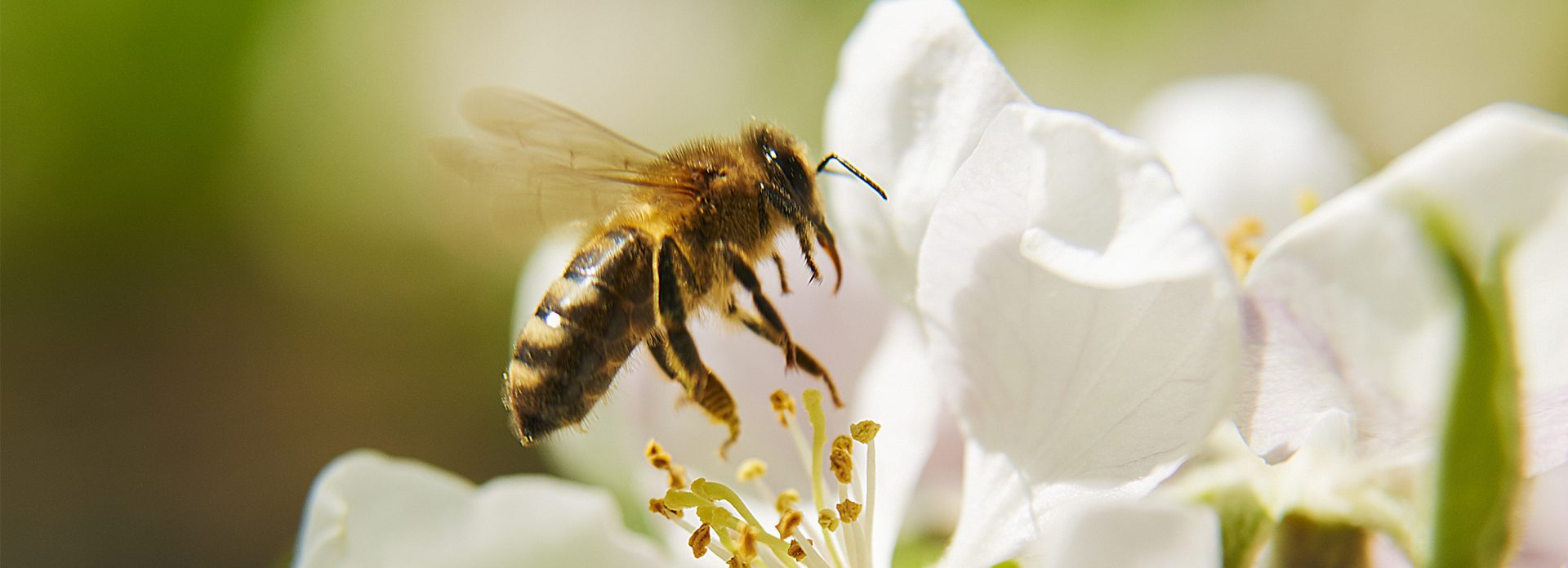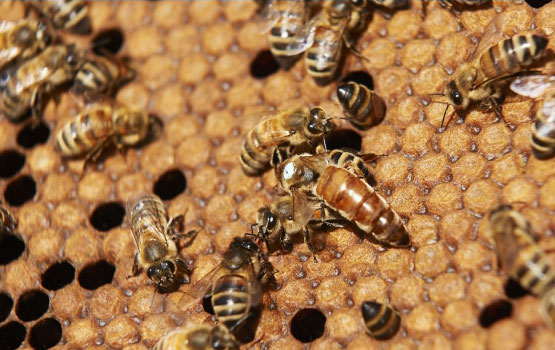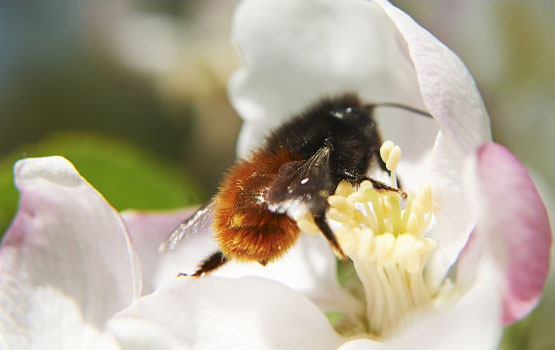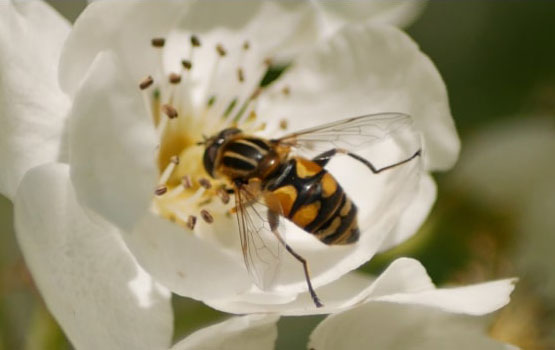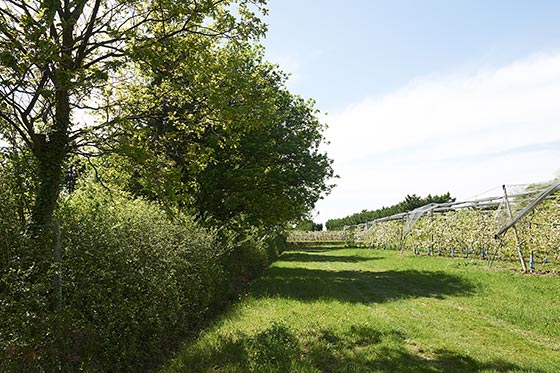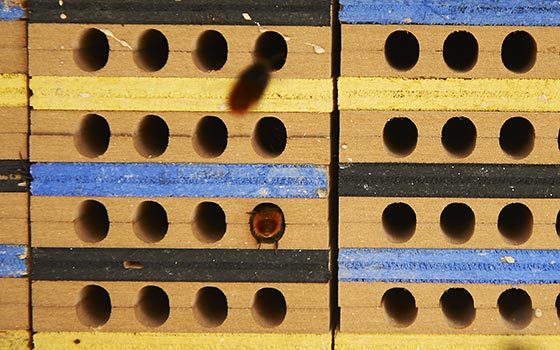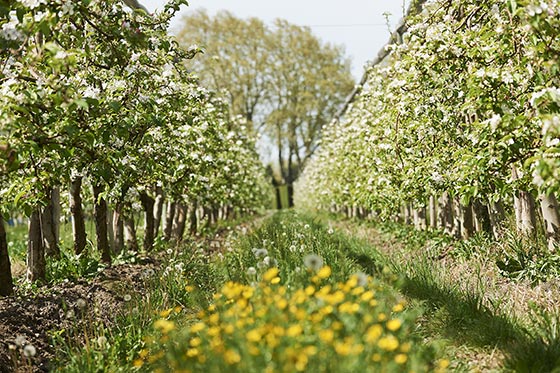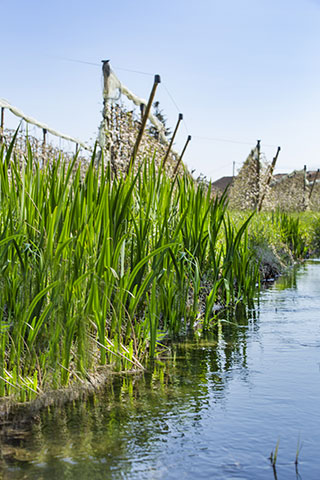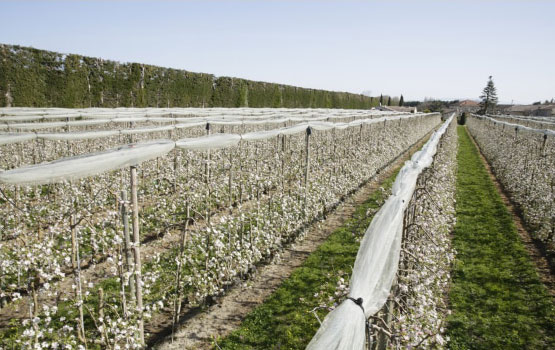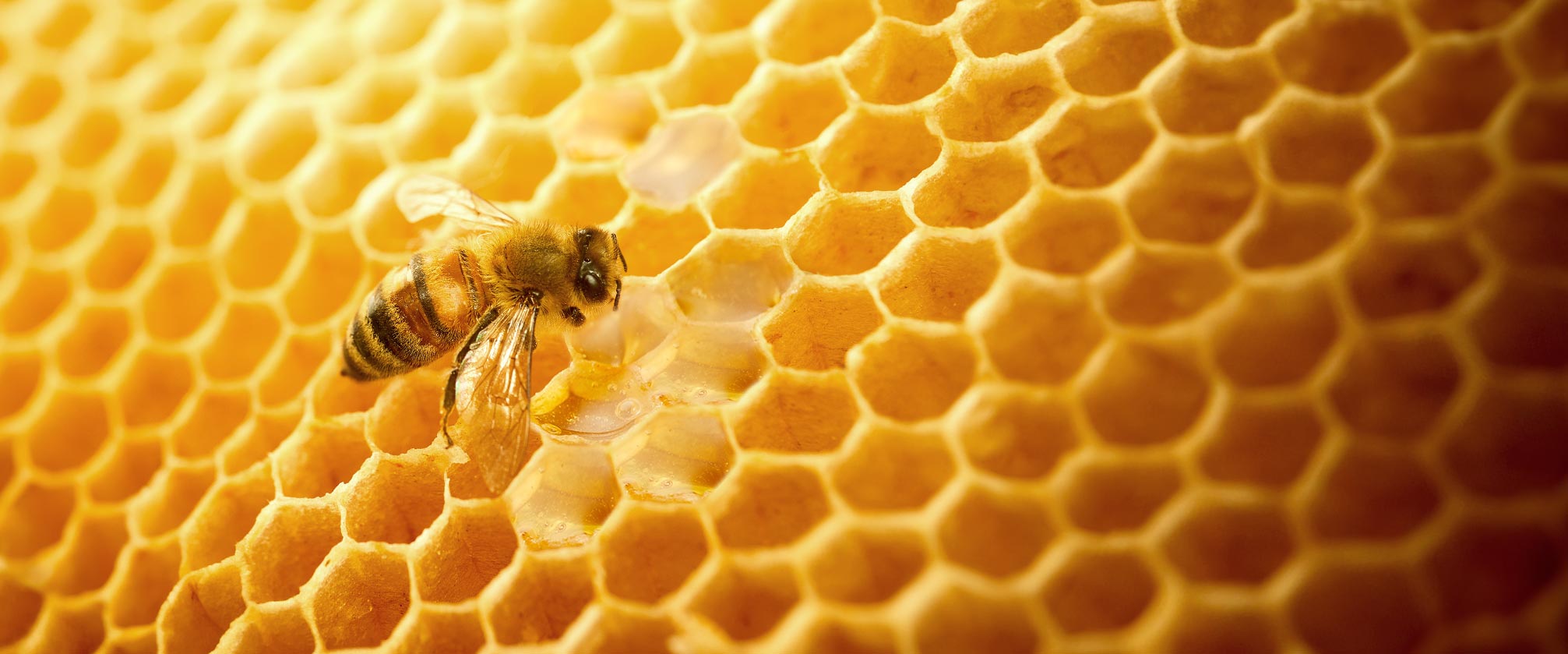Pollinating insects, including bees, are essential for pollinating apple blossom and turning it into fruit.
Pollination is a key factor in obtaining a harvest that is both quantitative and, above all, qualitative!
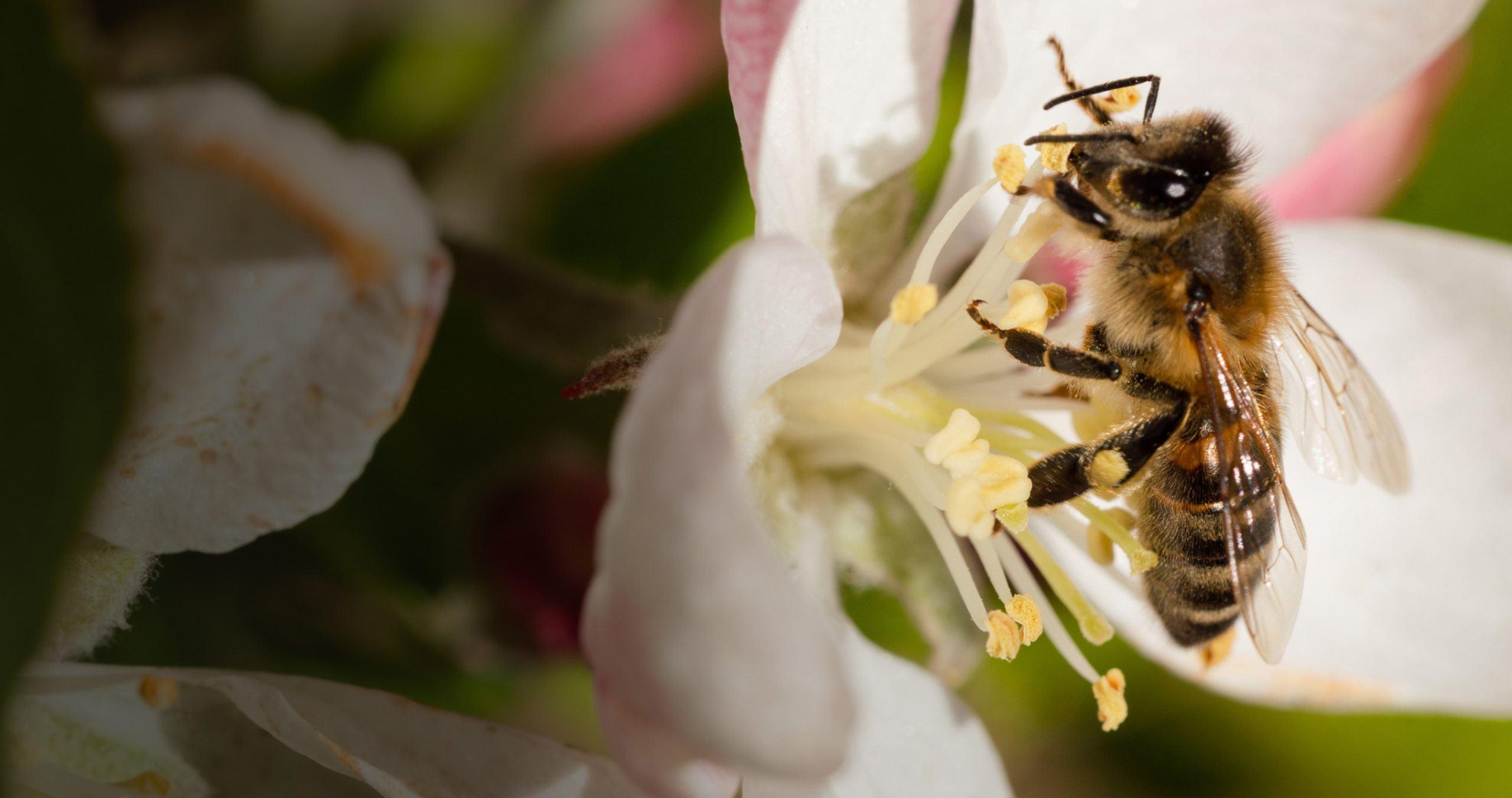
The role of
pollinating
insects
Pollinating insects are essential allies in the orchards: their presence has a positive effect on the overall quality of the fruit – its weight, shape, number of pips, etc.
Bees go from tree to tree to visit the flowers and gather pollen. The flowering and pollination period is very short, varying from 2 to 10 days!
75% of the fruit and vegetables we eat depend on pollination.
(source : IPBES).
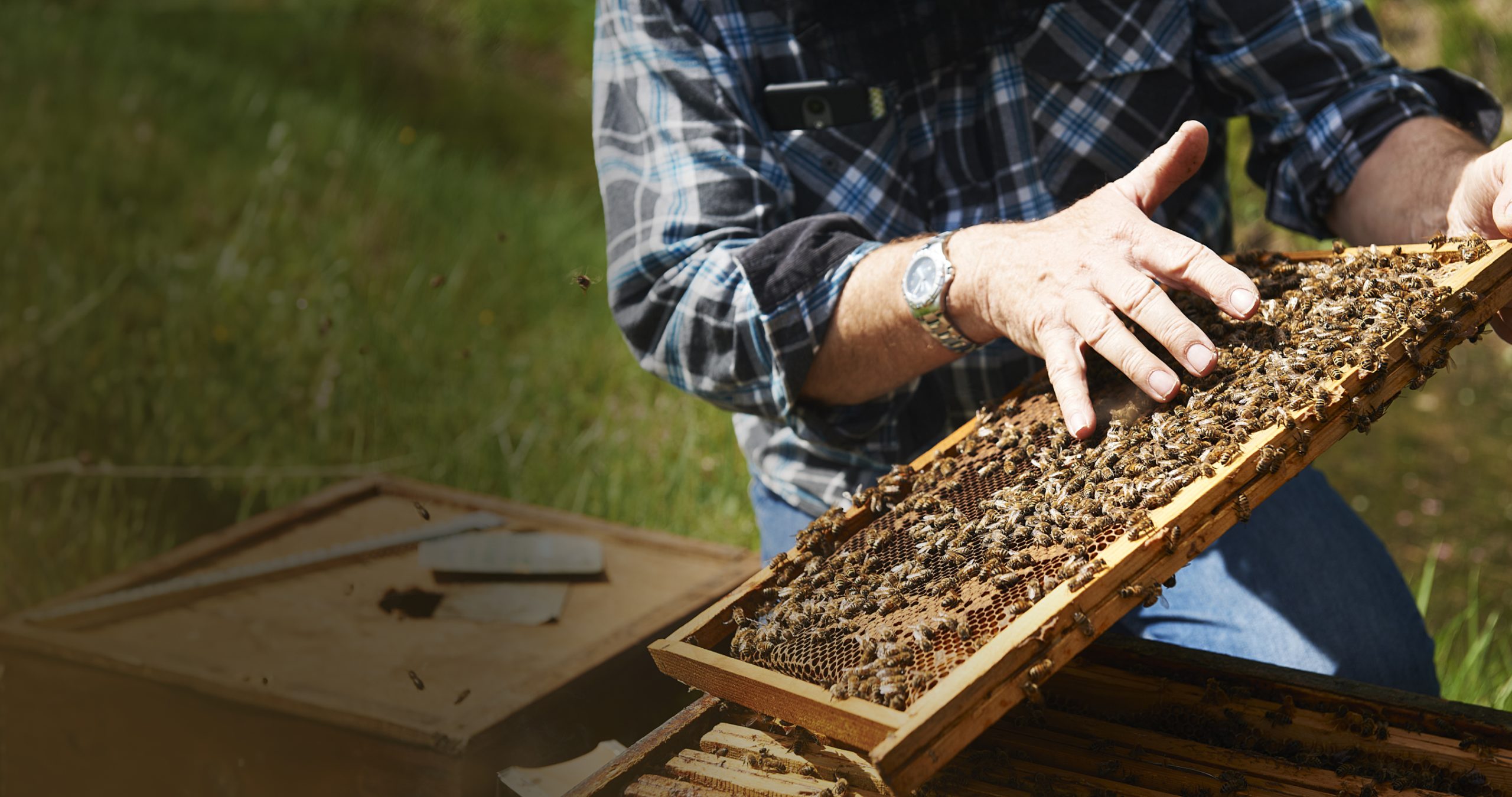
The
Bee Pink® 
programme
Aimed at all Pink Lady® growers, the Bee Pink® programme is designed to encourage the adoption of best practices for protecting pollinating insects. It includes a technical guide and a training programme.
It is the fruit of rigorous research and discussions with experts from the fields of agriculture and beekeeping.
Target: 100% of Pink Lady® growers becoming partners of or involved in the Bee Pink® programme.
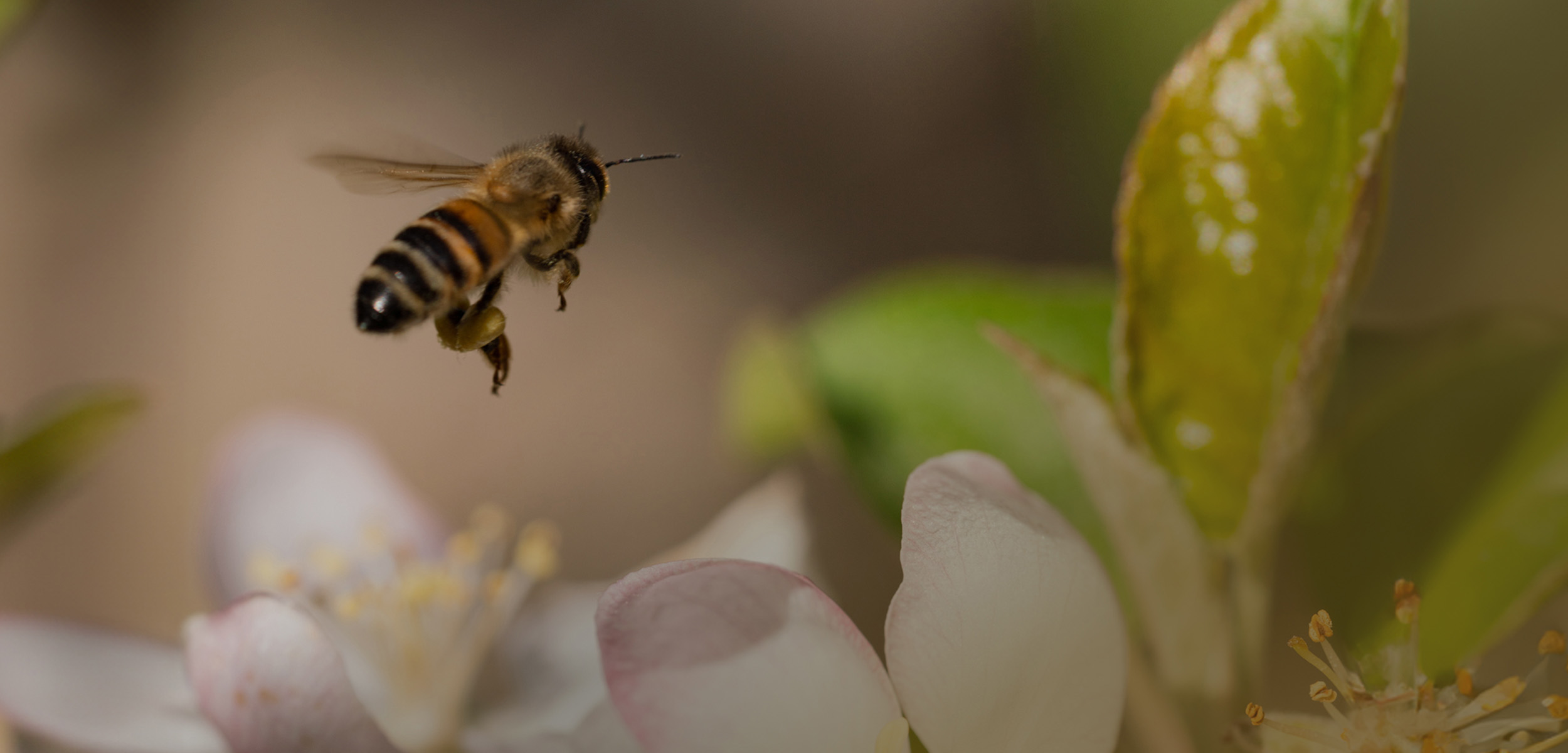
Bees
and other
pollinators
There are between 20,000 and 25,000 bee species in the world, which have several things in common: they visit flowers, collect nectar and pollen, and are excellent pollinators.
Two species in particular can be found in our orchards: Apis mellifera (the honey bee) and Osmia cornuta (the orchard bee). But other pollinating insects also play a role in pollination.
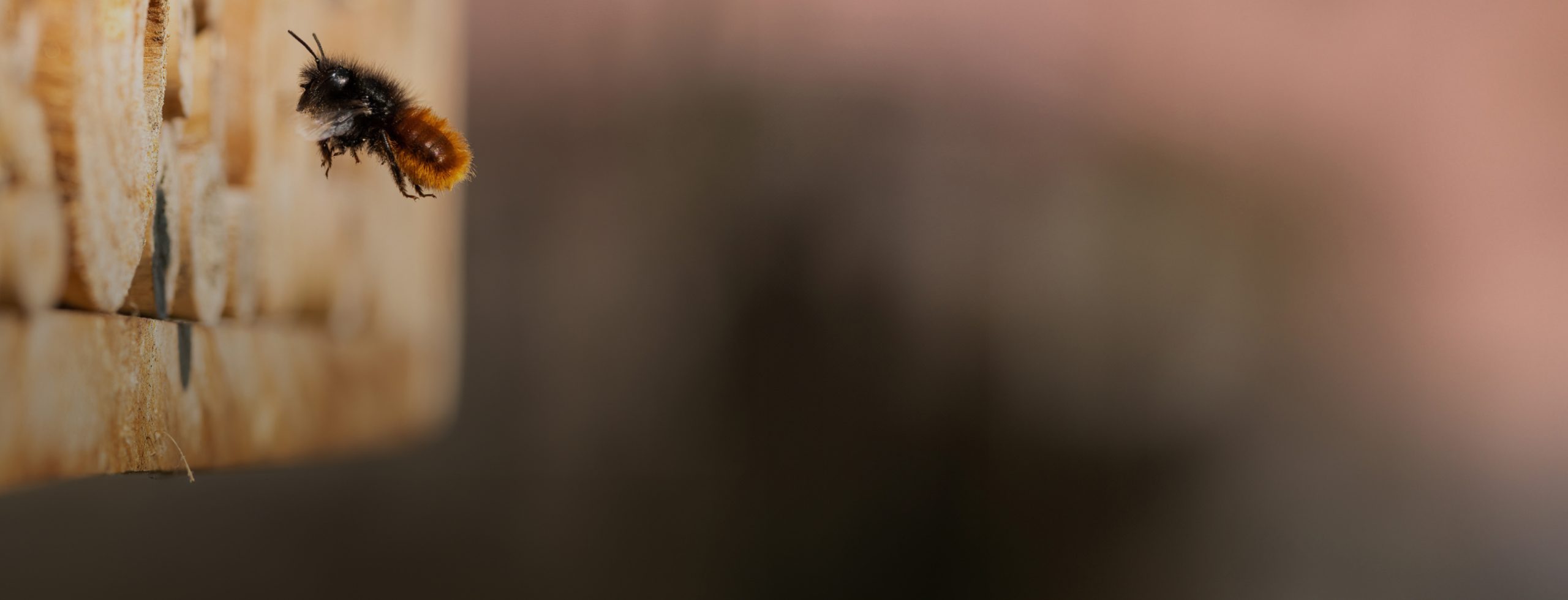
Protecting
wild bees
in the
orchard
To attract wild pollinators, rows of apple trees are not enough: Pink Lady® growers are rethinking the landscape in the form of an ecosystem capable of protecting pollinating species all year round, and providing them with shelter and food.
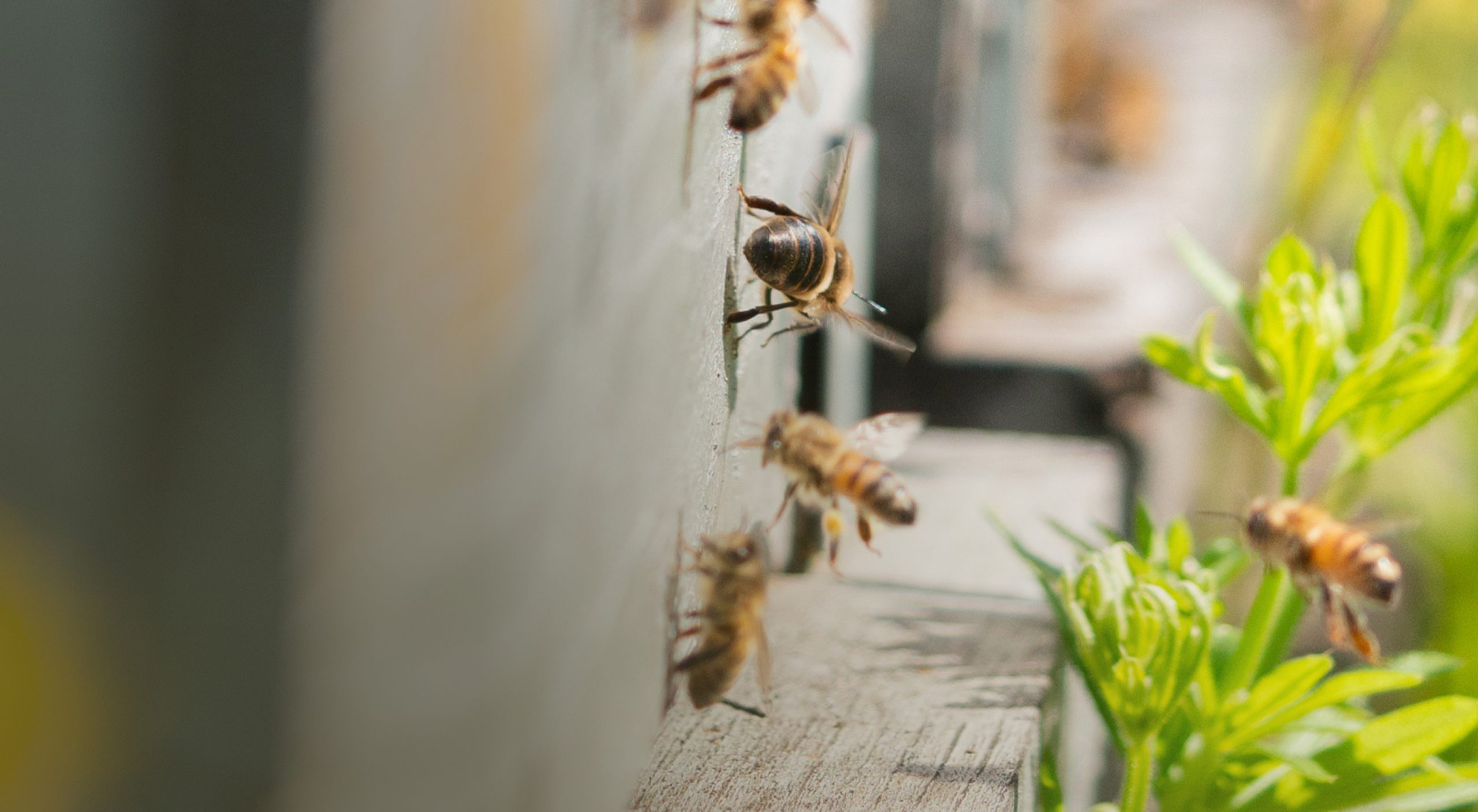
Introducing
honey bees
into orchards
Through partnerships with beekeepers, growers introduce honeybee hives into orchards at flowering time.
Honey bees and wild bees complement each other through their different morphological and behavioural characteristics. Stimulated by their cohabitation, they will visit more flowers, over a greater distance, and pollinate better.
best practicesDiscover the importance of biodiversity
